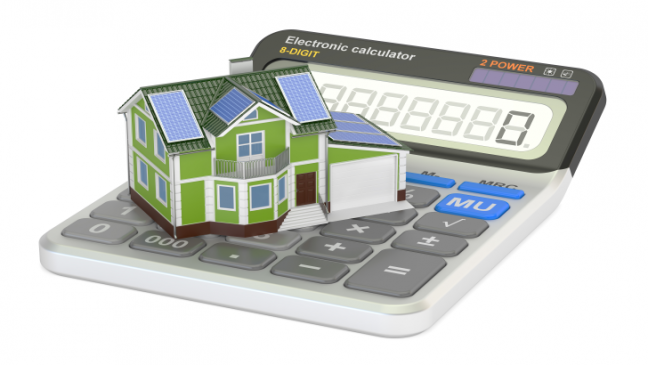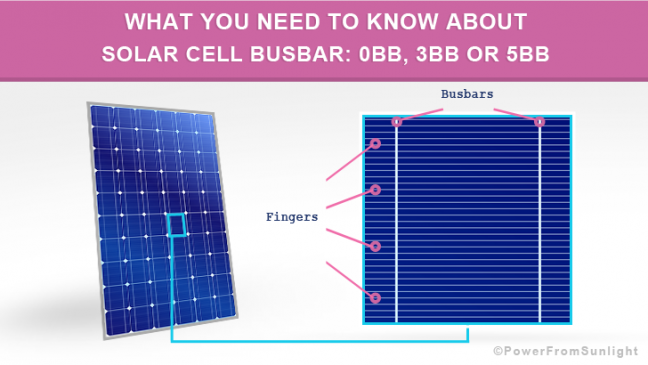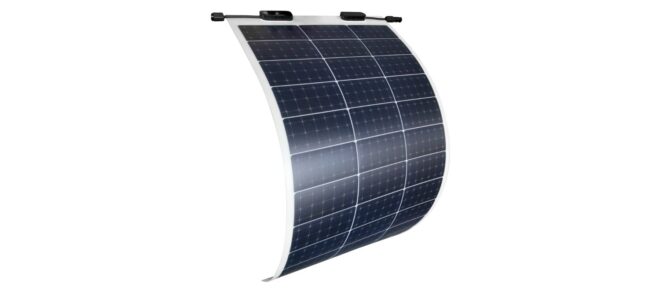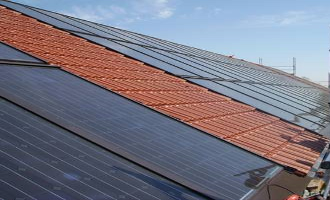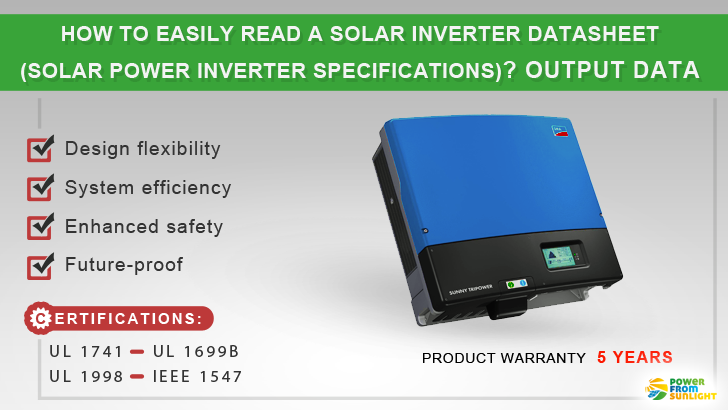
How To Easily Read a Solar Inverter Datasheet (Solar Power Inverter Specifications) Part 2: Output Data
This article explains easily how to read the relevant terms in a solar power inverter datasheet (solar inverter specifications) and how valuable this information is in order to choose the best one.
Before you read this article, you need to see the article about How To Easily Read a Solar Inverter Datasheet (Solar Power Inverter Specifications) Part 1: Input Data.
The following is an example of a solar inverter datasheet, taken with actual values from an SMA SUNNY TRIPOWER 15000TL-US.
If your solar specialist offers you a number of different inverters, look the solar inverter specifications carefully and be informed about these points.
Technical data
Output (DC)
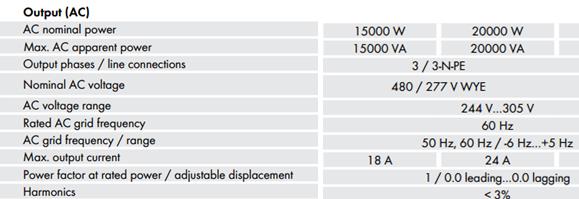
1. AC (output) nominal power
AC stands for alternating current and refers to the output side of the solar power inverter.
The AC nominal power of the solar power inverter (15000 Watt) is defined as the output specified for the PV inverter when in continuous operation.
The larger this value is, the better and more expensive the solar power inverter.
2. Maximum AC apparent power
The maximum AC apparent power of the solar PV inverter is 15000 VA. The apparent power consists of two parts:
- A usable part called real power, and
- A useless part called reactive power.
The power factor cos(φ) describes the quantitative ratio of the real used power to the apparent (total) power in the circuit.
Cos(φ) = 1 means it only flows real power to the load.
The larger this value is, the more powerful and more expensive the solar power inverter.
3. Output phases / line connections
The Sunny Tripower 15000TL-US converts the direct current of the PV array to grid-compliant three-phase current.
3 / N / PE refers to three-phase AC current 5-wire system with separate neutral and protective earthing conductor
- 3 is the number of phase conductors (three outer wires L1, L2, and L3)
- N is for the neutral conductor
- PE is for the protective earthing conductor (grounding conductor)
Three phase solar power inverter is better than the single phase inverter.
4. Nominal AC voltage
The standard configuration is a 480/277-volt wye system. The 480 volts is usually for motors and some appliances, and the 277 volts is used for standard appliances.
5. AC Voltage Range
This is the range of AC voltages with which the solar inverter can work.
A good solar power inverter has a large AC voltage range.
6. AC grid frequency / range
The AC grid frequency is the nominal frequency of the oscillations of alternating current in a utility grid transmitted from the solar power inverter to the end user.
It can vary in accordance with the corresponding country-specific standards (50 or 60 Hertz).
The allowable AC frequency range at the output of the solar power inverter is between 44 and 65 Hz. This parameter is used in the anti-islanding feature of the solar PV inverter.
A good solar power inverter has a large AC frequency range.
7. Rated AC grid frequency
The rated AC grid frequency at the output of the solar PV inverter is 60 Hz (USA Frequency).
8. Maximum output current
The maximum AC current that the inverter can deliver is 24 Amper.
9. Power factor at rated power / adjustable displacement
The power factor cos(φ) is given as a numerical value between 0 and 1 and describes the quantitative ratio of the real power flowing to the load to the apparent power in the circuit.
It relates to the phase angle difference (either leading or lagging) of the voltage and current traveling through the circuit.
Cos(φ) = 1 means it only flows real power to the load.
The solar power inverter must conform with the requirements of the grid operator according to the Power Factor and the reactive power.
10. Total Harmonic Distortion (THD, Harmonics)
Total Harmonic Distortion (THD) is defined as the ratio of the sum of the power of all the signal harmonics to that of the power of the fundamental frequency.
The lower the THD, the better.


